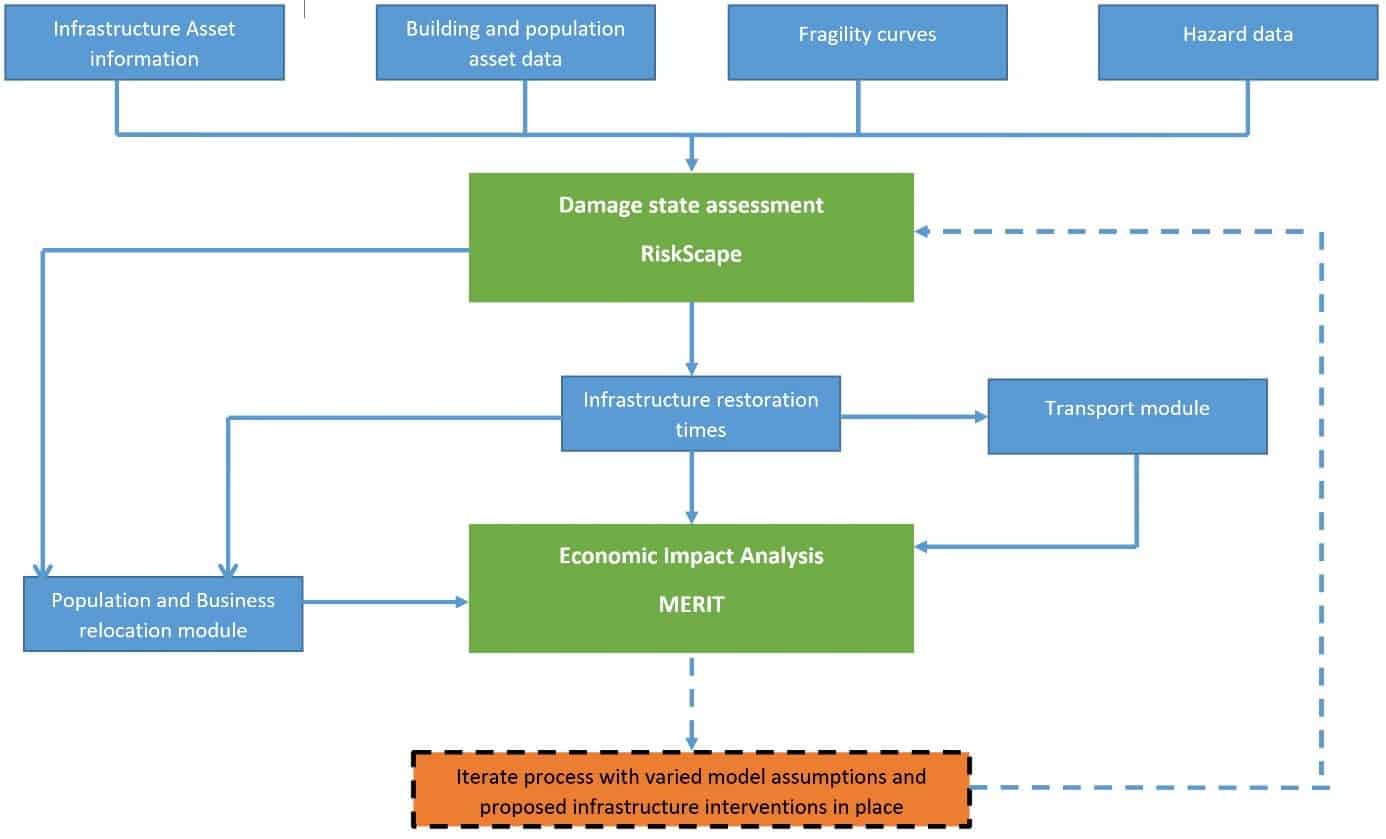The Wellington Lifelines Regional Resilience Project
26/09/2018
By Nicky Smith
How can co-ordinated infrastructure planning and investment improve the resilience of New Zealand’s capital city, Wellington, to earthquake events? To what extent can targeted infrastructure investments reduce the economic consequences experienced by Wellington, and the rest of New Zealand, should a large-scale event occur? These were among the key questions considered by a group of researchers, including members of the Resilience to Nature’s Challenges Economics Toolbox, in the Wellington Lifelines Regional Resilience Project.

Wellington’s vulnerability to a major earthquake event is well known, with a probability of a local magnitude 7.5 or greater earthquake of around 20% over the next 100 years. Evidence from New Zealand and abroad indicates that when key infrastructure is out or operating at degraded levels of service following a major hazard event, people leave, productivity drops, and communities and the economy suffer. What is more, utilities are also strongly interconnected, with the operation and restoration of one infrastructure often critically dependent on one or more other infrastructures. Despite these interdependencies, utilities have historically planned their resilience investments independently, often leading to diluted assessment of resilience arguments and sub-optimal investment outcomes.
Recognising the deficiencies in routine approaches, the Wellington Lifelines Regional Resilience Project has taken a step forward in integrated resilience planning. Drawing on knowledge from all 16 Wellington utility providers and local government, it identified and presented a preferred, accelerated, programme of infrastructure investments for Wellington. The project was supported by GNS Science’s RiskScape and Post Disaster Cities (PDC) teams who modelled and mapped infrastructure service outages and restoration after a M7.5 Wellington Fault event, and its associated perils (fault rupture, ground shaking, liquefaction, landslides, lateral spreading, subsidence). The likely scale and timeframe of infrastructure service losses under current investments were compared with that which might occur should further investments be made in infrastructure resilience.
The outcomes from this work then fed into modelling performed within MERIT (Measuring the Economics of Resilient Infrastructure Tool), a novel economic simulation tool developed by Market Economics, Resilient Organisations and GNS Science under the Economics of Resilient Infrastructure research programme and being extended under Resilience to Nature’s Challenges, that enables high-resolution assessment across space and through time of the economic consequences of infrastructure failure, business response and recovery options. With the preferred programme of investments, the MERIT modelling demonstrated a multi-billion-dollar reduction in economic losses and improved community outcomes in the event of a major seismic event in Wellington. In addition, the investment programme was also recognised to have co-benefits in reduction of losses and faster community and economic recovery arising from smaller earthquakes, and from threats arising from other perils.

The Wellington Lifelines Regional Resilience Project is an excellent example of multi-stakeholder co-ordination for a common goal and demonstrates a positive step forward in resilience planning in New Zealand.
Further information and demonstration of the MERIT tool is available at:www.merit.org.nz/merit




